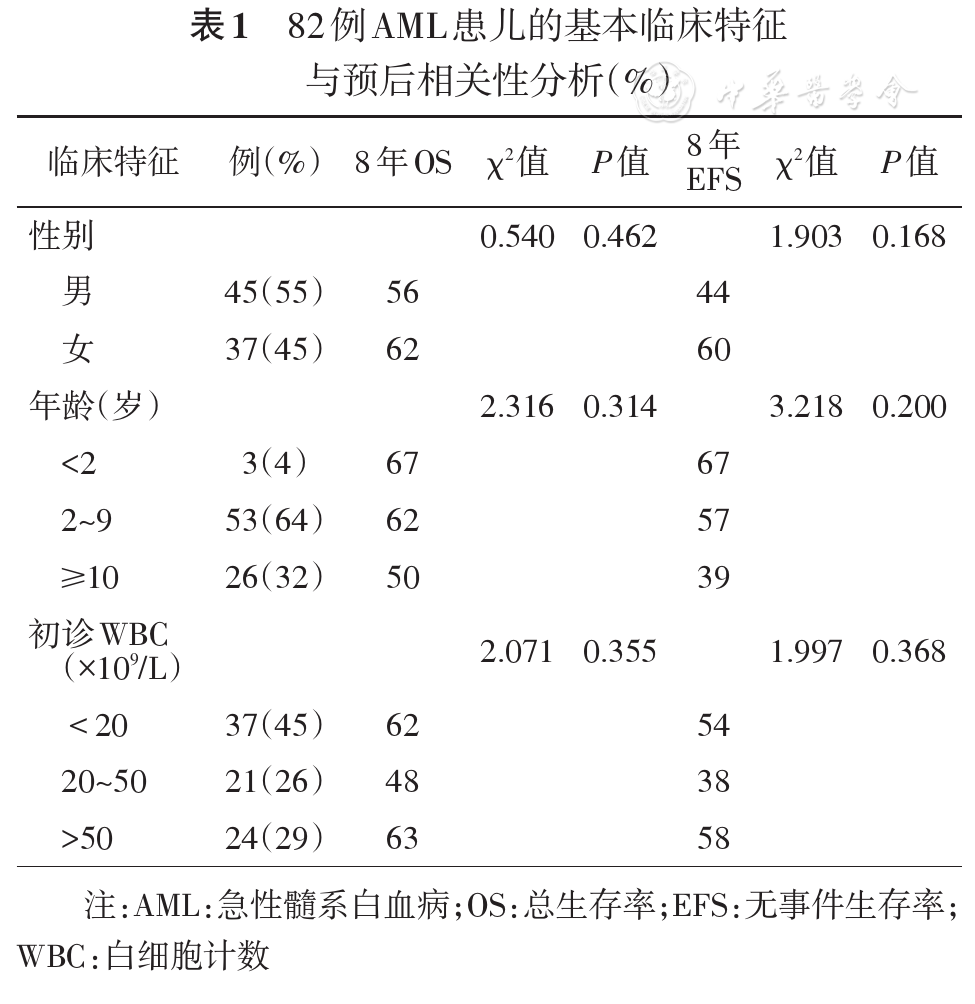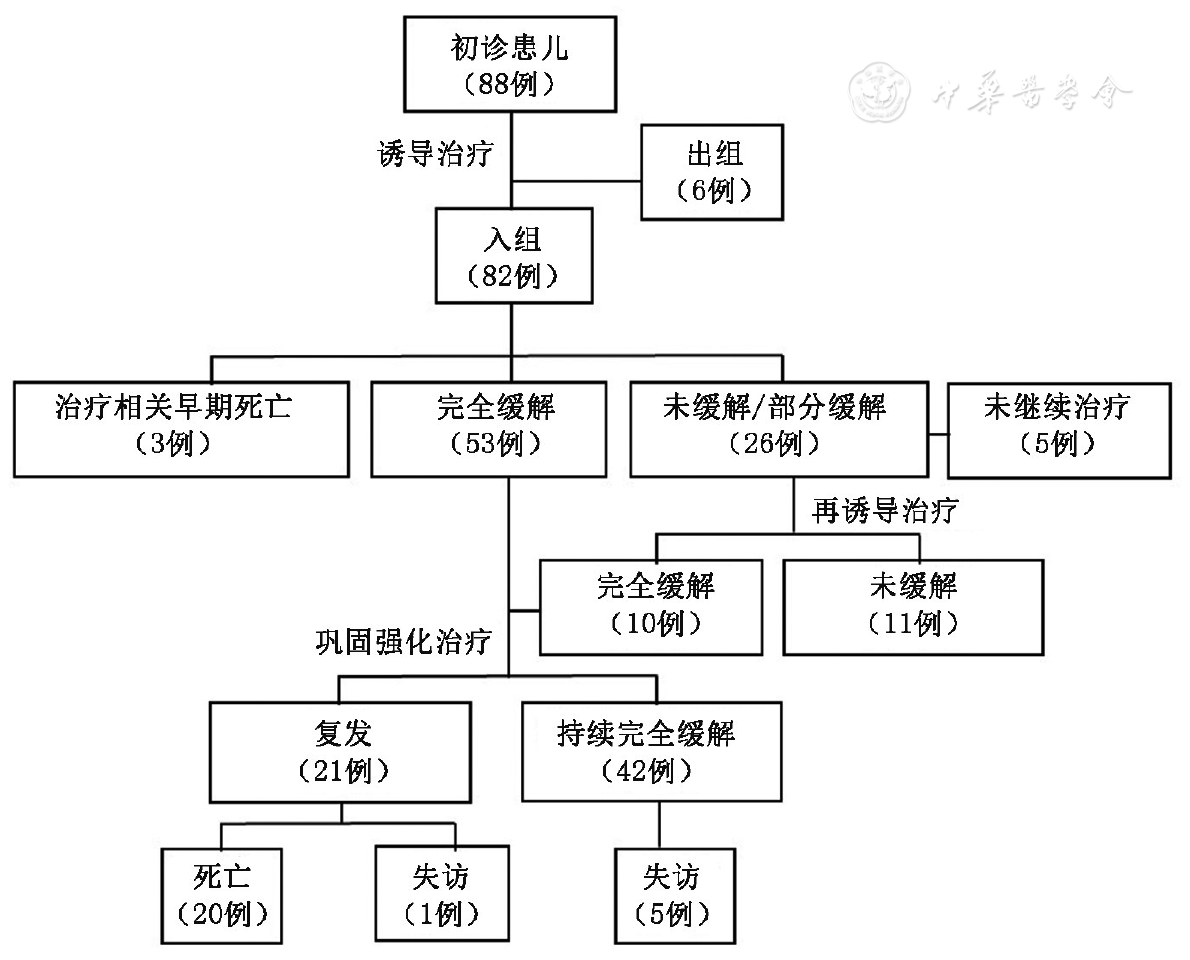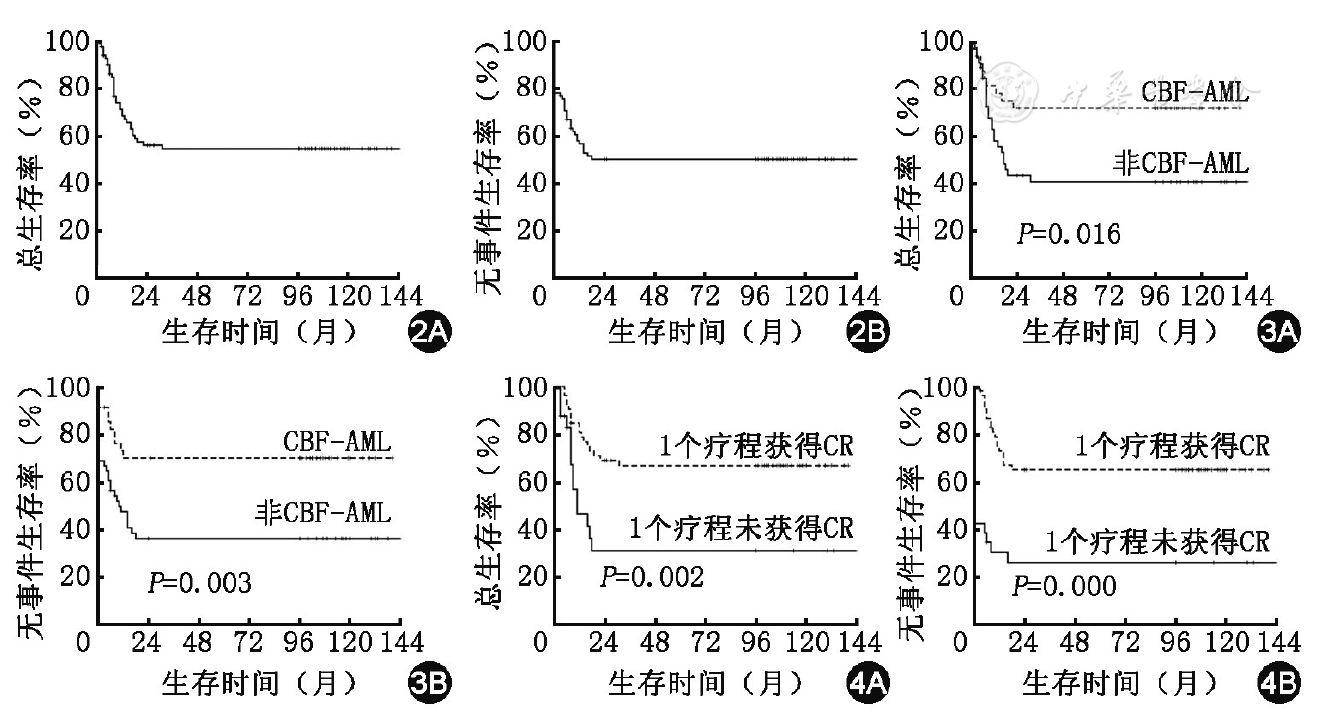[1] Abrahamsson J, Forestier E, Heldrup J, et al. Response-guided induction therapy in pediatric acute myeloid leukemia with excellent remission rate[J]. J Clin Oncol, 2011,29(3):310-315. DOI: 10.1200/JCO.2010.30.6829.
[2] Creutzig U, Zimmermann M, Dworzak MN, et al. Development of a curative treatment within the AML-BFM studies[J]. Klin Padiatr, 2013,225 Suppl 1:S79-86. DOI: 10.1055/s-0033-1337968.
[3] Horibe K, Saito AM, Takimoto T, et al. Incidence and survival rates of hematological malignancies in Japanese children and adolescents (2006-2010): based on registry data from the Japanese Society of Pediatric Hematology[J]. Int J Hematol, 2013,98(1):74-88. DOI: 10.1007/s12185-013-1364-2.
[4] Pession A, Masetti R, Rizzari C, et al. Results of the AIEOP AML 2002/01 multicenter prospective trial for the treatment of children with acute myeloid leukemia[J]. Blood, 2013,122(2):170-178. DOI: 10.1182/blood-2013-03-491621.
[5] Kaspers GJ, Zimmermann M, Reinhardt D, et al. Improved outcome in pediatric relapsed acute myeloid leukemia: results of a randomized trial on liposomal daunorubicin by the International BFM Study Group[J]. J Clin Oncol, 2013,31(5):599-607. DOI: 10.1200/JCO.2012.43.7384.
[6] Faulk K, Gore L, Cooper T. Overview of therapy and strategies for optimizing outcomes in de novo pediatric acute myeloid leukemia[J]. Paediatr Drugs, 2014,16(3):213-227. DOI: 10.1007/s40272-014-0067-3.
[7] Gore L, Triche TJ, Farrar JE, et al. A multicenter, randomized study of decitabine as epigenetic priming with induction chemotherapy in children with AML[J]. Clin Epigenetics, 2017,9:108. DOI: 10.1186/s13148-017-0411-x.
[8] Yates J, Glidewell O, Wiernik P, et al. Cytosine arabinoside with daunorubicin or adriamycin for therapy of acute myelocytic leukemia: a CALGB study[J]. Blood, 1982,60(2):454-462.
[9] Taga T, Tomizawa D, Takahashi H, et al. Acute myeloid leukemia in children: current status and future directions[J]. Pediatr Int, 2016,58(2):71-80. DOI: 10.1111/ped.12865.
[10] de Rooij JD, Zwaan CM, van den Heuvel-Eibrink M. Pediatric AML: from biology to clinical management[J]. J Clin Med, 2015,4(1):127-149. DOI: 10.3390/jcm4010127.
[11] Tsukimoto I, Tawa A, Horibe K, et al. Risk-stratified therapy and the intensive use of cytarabine improves the outcome in childhood acute myeloid leukemia: the AML99 trial from the Japanese Childhood AML Cooperative Study Group[J]. J Clin Oncol, 2009,27(24):4007-4013. DOI: 10.1200/JCO.2008.18.7948.
[12] Gibson BE, Webb DK, Howman AJ, et al. Results of a randomized trial in children with acute myeloid leukaemia: medical research council AML12 trial[J]. Br J Haematol, 2011,155(3):366-376. DOI: 10.1111/j.1365-2141.2011.08851.x.
[13] Rubnitz JE, Inaba H, Dahl G, et al. Minimal residual disease-directed therapy for childhood acute myeloid leukaemia: results of the AML02 multicentre trial[J]. Lancet Oncol, 2010,11(6):543-552. DOI: 10.1016/S1470-2045(10)70090-5.
[14] Hann IM, Stevens RF, Goldstone AH, et al. Randomized comparison of DAT versus ADE as induction chemotherapy in children and younger adults with acute myeloid leukemia. Results of the Medical Research Council's 10th AML trial (MRC AML10). Adult and Childhood Leukaemia Working Parties of the Medical Research Council[J]. Blood, 1997,89(7):2311-2318.
[15] Tomizawa D, Tawa A, Watanabe T, et al. Excess treatment reduction including anthracyclines results in higher incidence of relapse in core binding factor acute myeloid leukemia in children[J]. Leukemia, 2013,27(12):2413-2416. DOI: 10.1038/leu.2013.153.
[16] Nakayama H, Tabuchi K, Tawa A, et al. Outcome of children with relapsed acute myeloid leukemia following initial therapy under the AML99 protocol[J]. Int J Hematol, 2014,100(2):171-179. DOI: 10.1007/s12185-014-1616-9.
[17] Rubnitz JE. Current management of childhood acute myeloid leukemia[J]. Paediatr Drugs, 2017,19(1):1-10. DOI: 10.1007/s40272-016-0200-6.
[18] 阮敏,张丽,韩聪,等.儿童正常核型急性髓系白血病核仁磷酸蛋白和髓系转录因子CCAAT增强子结合蛋白A基因突变的临床研究[J].中华儿科杂志,2014,52(4):303-307. DOI: 10.3760/cma.j.issn.0578-1310.2014.04.015.




